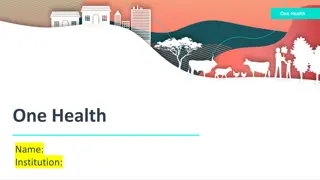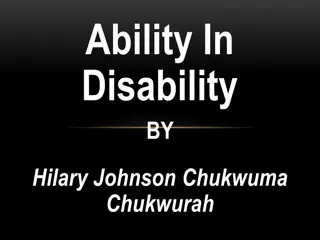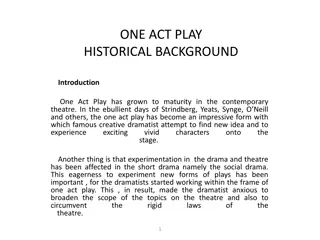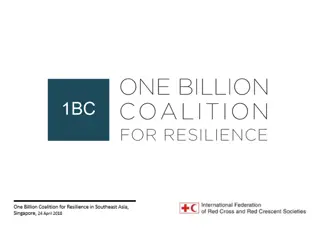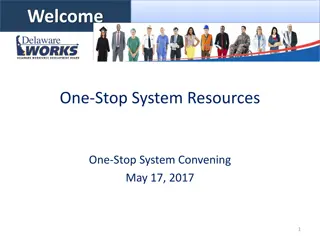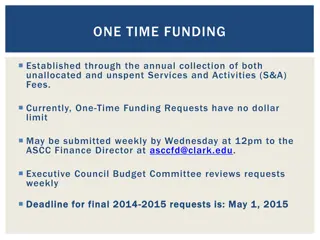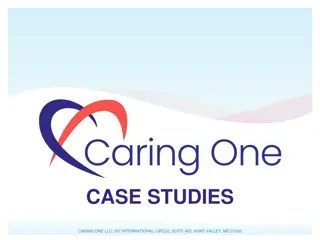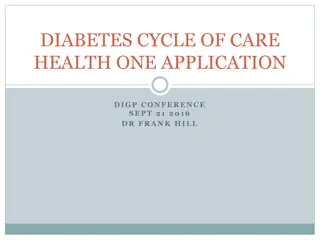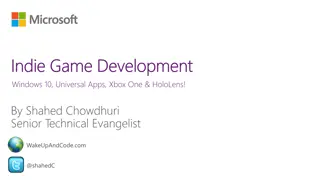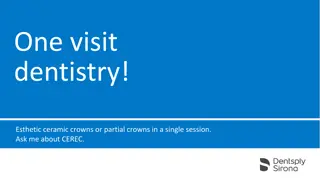
Importance and Evolution of Human Resource Management
Human resource management plays a crucial role in organizations by managing valuable assets, driving organizational success, and providing competitive advantage. Understanding the evolution and philosophies of HRM sheds light on its strategic importance and impact on achieving organizational goals.
Download Presentation

Please find below an Image/Link to download the presentation.
The content on the website is provided AS IS for your information and personal use only. It may not be sold, licensed, or shared on other websites without obtaining consent from the author. If you encounter any issues during the download, it is possible that the publisher has removed the file from their server.
You are allowed to download the files provided on this website for personal or commercial use, subject to the condition that they are used lawfully. All files are the property of their respective owners.
The content on the website is provided AS IS for your information and personal use only. It may not be sold, licensed, or shared on other websites without obtaining consent from the author.
E N D
Presentation Transcript
H U M A N R E S O U R C E M A N A G E M E N T C H A P T E R O N E
WHY IS HUMAN RESOURCE IMPORTANT? Affects the quality of goods and service produced Is the driving force in organizational life cycle is responsible for managing other resources of an organization Prerequisite for organizational learning Employees are scarce resources that should be acquired effectively, utilized, developed and retained. Provides an organization with competitive advantage
DEFINITION OF HUMAN RESOURCE MANAGEMENT Human resource management refers to the management of an organization s most valued assets the people working there who individually and collectively contribute to the achievement of its objectives. Human Resource Management is the process of achieving organizational goal by attracting, developing, and retaining and properly using talented human resource. Human resource management can be defined as a strategic, integrated and coherent approach to the employment, development and well-being of the people working in organizations. Is about having the best human resources who are best utilized to produce cheaper and better quality goods and services The process of managing human talent to achieve an organization s objectives
.EVOLUTION OF HUMAN RESOURCE MANAGEMENT Personnel management Short term ,routine, reactive Compliance Pluralist, collective, low trust Bureaucratic Activity based Internally focused Specialized/professional Human resource management Strategic, proactive Commitment Unitarist, individual, high trust Organic Solution based Externally focused Largely integrated management Maximum utilization (human asset) into line Cost minimization , human s are seen as liabilities
PHILOSOPHIES OF HUMAN RESOURCE MANAGEMENT 1. Human resource management is and has to be owned and driven by the top management in the interests of the key stakeholders. the top management owns and drives the agenda for effective people management in an organization. Business or organizational strategies form the basis for human resource strategies,and there should be a strategic fit. Investment in people, like any other capital investment,is necessary for better returns in the future. Employees are capable of producing added value. It is the role of the management to obtain such added value through human resource development and performance management systems. Organizational success comes from the employees total commitment to the organizational mission,goals,objectives,and values. Building a strong organizational culture that gives managers an advantage in stimulating employees commitment through effective communication, training, coaching, mentoring and performance management processes 2. 3. 4. 5. 6.
OBJECTIVE OF HUMAN RESOURCE MANAGEMENT The overall objective of human resource management is to ensure organizational success through people. ensure that the organization has competent people it needs support the organization achieve its goal contribute to the development of high-performance culture create a positive employment relationship between management and employees encourage the application of an ethical approach to manage human resource.
Major HRM functions Major HRM functions Procurement functions focus on availing the right type and number of employees required for achieving organizational goals. Development functions Focus on enhancing knowledge , skill and values of employees to perform their current and future responsibilities competently. Integration functions Focuses on reconciling organizational goals with individual goals. Maintenance functions Focuses on maintaining physical and mental health of employees. 10
PROCUREMENT FUNCTIONS Job analysis- is the process of obtaining information about jobs by determining their duties, tasks, or activities, skills and qualifications needed to perform it successfully Human resource planning- is the process by which an organisation attempts to ensure that it has the right number of qualified people in the right jobs at the right time. 11
PROCUREMENT FUNCTIONS Employee recruitment and selection Recruitment - is the process of seeking and attracting a pool of applicants from which qualified candidates for job vacancies within an organisation can be selected. Employee selection- involves choosing from the available candidates the individual predicted to be most likely to perform successfully in the job. Placement- on the other hand, is the assignment of an employee to a new or different job. Orientation- is the formal process of familiarizing new employees with the organization, their jobs, their work units and employees. 12
DEVELOPMENT FUNCTIONS Career development involves Planning careers and managing individuals careers. Training and development- employees learn how to perform their jobs, improve their performance and prepare themselves for more senior positions. Performance appraisal- determining how well employees are doing their jobs, communicating that information to the employees and establishing a plan for performance improvement. activities help is concerned with 13
INTEGRATION FUNCTIONS Employee disciplining Compensation refers to all types of rewards that employees receive in return for their services. 14
MAINTENANCE FUNCTIONS Safety- involves protecting employees from injuries caused by work-related accidents. Health- devising schemes employees' physical and mental well being. Creating conducive working environment Promoting smooth between management and employees that enhance working relationship 15
STRATEGIC IMPORTANCE OF HUMAN RESOURCE MANAGEMENT If managed strategically HRM can bring organizational excellence through:- Becoming partner with top and line managers of an organization in strategy execution Organizing work efficiently to ensure costs are reduced without compromising quality Becoming representative of employees by representing employees concern to top management and by working on ways to increase employee commitment. Become an agent of continuous change by shaping process and organizational culture.
THE THE LINK LINK BETWEEN BETWEEN HRM HRM AND AND FIRM FIRM PERFORMANCE PERFORMANCE 17
.HRM ROLE IN DELIVERING RESULT The strategic HR role Focuses on aligning HR strategies and practices with business strategy. Requires to conduct organizational diagnosis to identify the strength and weakness of organizations.
.HRM ROLE IN DELIVERING RESULT Management of firm infrastructure role Focuses on designing and delivering efficient HR process for attracting, retaining , developing, promoting, appraising and other HR process to ensure administrative efficiency. Administrative efficiency comes from continues improvement of HR processes and from ensuring HR professional s have the right competency.
.HRM ROLE IN DELIVERING RESULT Management of employee contribution role Encompasses involvement in the day to day problems, concerns and needs of employees. Required understanding employees needs and working to met those needs in order to increase employees contributions. Focuses on developing employees competences to deliver results.
.HRM ROLE IN DELIVERING RESULT Management of transformation and change role HR professionals are expected to play cultural guardian's and cultural catalyst role. Help employees let go of the past way of doing things and adapt to the new way of doing things. Ensure the change occurs as intended by defining value and behavioral requirements of the change.
READING ASSIGNMENT Read models of human resource management (Armstrong human resource management practice page 4-8)
THE MICHIGAN/MATCHING MODEL o Emphasizes more on tightfit between the HR strategy and the business strategy. o Business strategy is the main focus o Human resources are taken like any other resource which must be fully utilized together with the other resources to achieve organizational objectives. o This model emphasizes more on the hard side of HRM HR systems and the organization structure should be managed in a way that is congruent with organizational strategy 25
HARVARD MODEL OF HRM o The Harvard model acknowledges the existence of multiple stakeholders within the organization. shareholders management employees, government and the community at large o interest of the various groups must be fused and factored in the creation of HRM strategies and ultimately the creation of business strategies. o This model emphasizes more on the human/soft side of HRM o Emphasizes the importance of employees like any other stakeholder in influencing organizational outcomes. 28
CHARACTERISTICS OF HRM IN HARVARD FRAMEWORK Line managers accept more responsibility for ensuring the alignment of competitive strategy and HRM policy HRM has the mission of setting policies that govern how HR activities are developed and implemented in ways that make them more mutually reinforcing HRM is the concern of management in general rather than the HRM function in particular. 30
GUEST MODEL OF HRM oThis model is a fusion of hard and a soft approach of HRM. oGuest proposes 4 crucial components that underpin organizational effectiveness. Strategic Integration This is the ability of organizations to maintain a fit between the HRM strategy and the business strategy. In other words, there must be congruence between business strategy and the HR strategy for the organization to achieve its goals. 1. 31
GUEST MODEL OF HRM 2. the ability of the organization and its people to adapt to the changing business and work environment. 3. High Commitment attitudinal commitment- which is reflected through a strong identification with the organization. behavioral commitment- the ability to go an extra mile, and 4. Quality Quality is based on the assumption that provision of high quality goods and services results from a quality way of managing people. Flexibility 32


